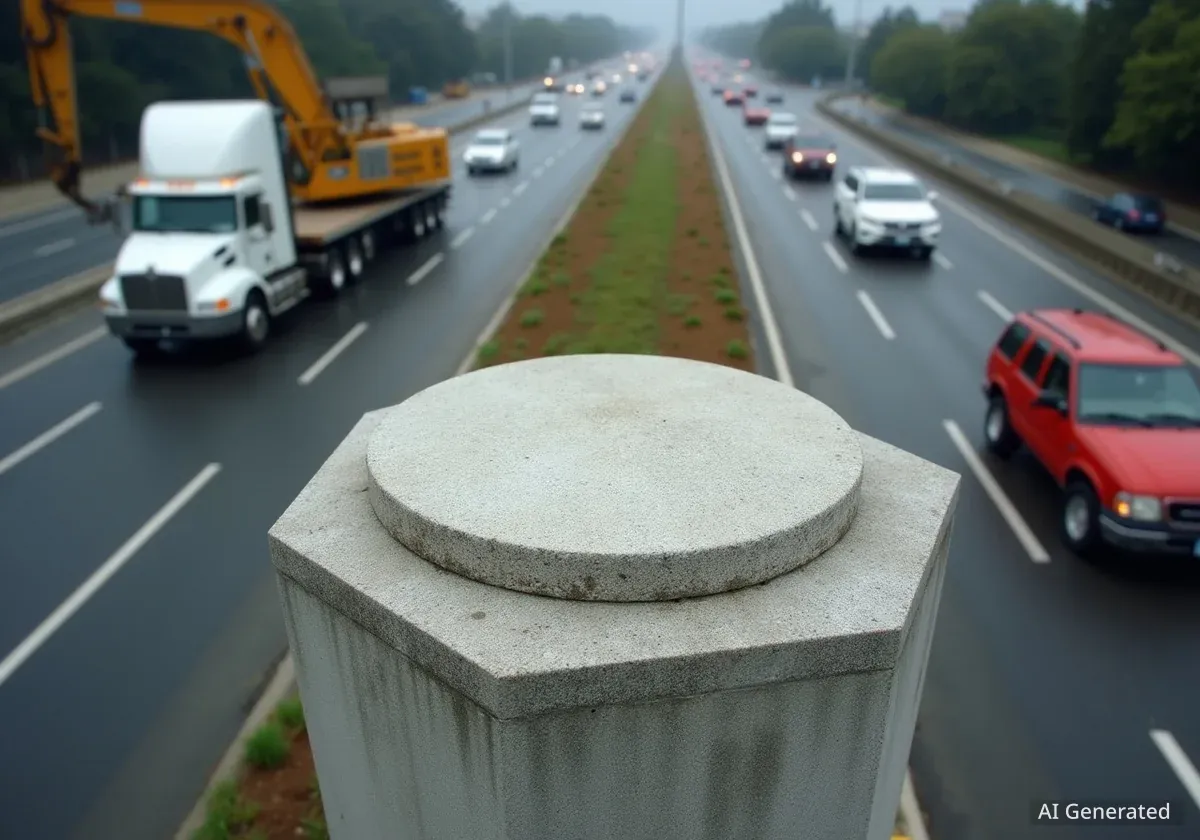A prominent statue of Saint Junipero Serra that stood above Interstate 280 in Hillsborough for five decades has been removed. California Department of Transportation (Caltrans) crews quietly took down and demolished the 26-foot-tall concrete and steel monument in August 2025. The decision was made without public announcement, sparking concerns from the Archdiocese of San Francisco.
The statue, a familiar sight for travelers between San Jose and San Francisco, depicted a robed man pointing his finger. Its removal has drawn attention to the complex legacy of Junipero Serra and the process behind such decisions regarding public art and historical figures.
Key Takeaways
- The 26-foot Junipero Serra statue was removed from I-280 in August 2025.
- Caltrans cited non-compliance with art program requirements and frequent vandalism as reasons.
- The Archdiocese of San Francisco expressed concern over the lack of transparency.
- The statue stood for 50 years and was a well-known landmark.
- Serra's legacy has been a subject of debate, particularly concerning Native American treatment.
Decades-Long Presence and Sudden Disappearance
The Junipero Serra statue was erected in 1975. It overlooked the Junipero Serra Freeway, also known as I-280, in San Mateo County. For half a century, it served as a landmark. Many commuters recognized the figure as they drove past.
The removal in August 2025 was carried out by Caltrans crews. There were no prior public announcements or widespread notifications about the planned demolition. This quiet operation led to questions from various community groups.
Statue Details
- Height: 26 feet
- Material: Concrete and steel
- Artist: Louis DuBois
- Installation Year: 1975
- Location: Above Interstate 280, Hillsborough
Reasons Cited for Removal
Caltrans spokesperson Jeneane Crawford explained the reasons for the statue's removal. According to Crawford, the installation did not meet "current Transportation Art Program requirements." Additionally, the statue had become a frequent target for vandalism and graffiti over the years.
The agency also stated that the statue was evaluated for eligibility in the California Register of Historical Resources. It was determined not eligible for historical protection under Public Resources Code 5024. Therefore, Caltrans proceeded with its removal.
Community Reactions and Lack of Transparency
The Archdiocese of San Francisco voiced strong concerns regarding the statue's disappearance. Parishioners had inquired about the monument's absence. The Archdiocese stated that the action appeared to be done "in the dark of the night."
"It is incumbent upon government to be transparent and to not take actions that appear to single out particular groups in a negative way. In this case, it is easy to see why we remain in a climate of mistrust and division," the Archdiocese told KRON4.
Archbishop Salvatore Cordileone also commented on the matter. He learned about the removal after it had occurred. He suggested that Caltrans and the Transportation Art Program did not consult with groups who might hold different opinions on the statue's preservation.
"No one fought for St. Junipero Serra because apparently, officials from Caltrans and the Transportation Art Program didn’t consult with anyone who would give them an opinion that differed from their own," Archbishop Cordileone wrote in a statement.
Who Was Junipero Serra?
Junipero Serra was an 18th-century Franciscan priest and missionary. He traveled along the California coast and founded nine of the state's 21 missions. Historically, he is known as the "Apostle of California." Pope Francis canonized him in 2015.
However, Serra's legacy has become controversial. Critics point to the treatment of Native Americans at the missions, which included forced labor and cultural assimilation. This aspect of his history has led to calls for re-evaluation of monuments honoring him.
Consultation and Historical Context
Before the removal, Caltrans officials said they consulted with Ohlone Native American tribes. These tribes have ancestral ties to the region where the statue stood. Input was also sought from various historical, art, and religious organizations.
The Muwekma Ohlone Tribe acknowledged that removing the statue could help recognize a "painful history of colonialism." This history is deeply rooted in their ancestral lands. However, the tribe clarified that they were not directly involved in Caltrans' final decision to remove the statue.
Caltrans 2022 Study
The California Department of Transportation published a study in 2022. This study examined "harmful" names and monuments on state highways. It specifically addressed those with "derogatory or racist linkages."
The study noted that commemorating individuals through statues can reflect power imbalances and historical prejudices. It highlighted figures like Christopher Columbus and Junipero Serra as examples of individuals celebrated by some but offensive to others. The report acknowledged the controversy inherent in monument removal.
Future of the Site
Currently, there are no plans to install another statue in the location where the Junipero Serra monument once stood. Caltrans confirmed this information. The agency's focus remains on adhering to its updated Transportation Art Program requirements and addressing maintenance concerns.
The removal of the statue highlights a broader ongoing discussion across California and the United States. Communities are re-evaluating historical monuments and their impact on diverse populations. This process often involves balancing historical reverence with contemporary understandings of social justice and cultural sensitivity.





